2013 Arctic Cat F800 and F1100 Sno Pro RR Review – Video

Cat's 2013 Race Replica is a race sled for the masses
Shortly after the Sno Pro 500 was released as a production model in 2010, Arctic Cat loyalists begged for an 800cc version. “That engine won’t fit in the race chassis,” was the response of Arctic Cat engineers.
Engine Type:Horizontal In-line
Cylinders:2
Engine Stroke:2-Stroke
Valve Configuration:Reed Valve
Displacement:794 / 48.4
Starter:Pull
Turbocharged:No
View Full SpecIt’s true. The 2008-2011 Sno Pro 600 and current Sno Pro 500 chassis was designed to hold a smaller engine, but the new ProCross chassis is also the current Sno Pro 600 race chassis and it will accept the 800 HO (as well as the 1100 four-stroke). Not forgetting the call for an 800cc version of its race sled, Cat put together the 2013 F800 Sno Pro RR (as well as the F1100 Turbo Sno Pro RR). The RR stands for Race Replica, but it’s important to remember it is a replica of the cross-country version of the Sno Pro 600, not the snocross version.
Get the Flash Player to see this player. |
So, how close is it to the 600 Sno Pro guys like Ryan Simons, Brian Dick and D.J. Ekre saddle up every weekend? Pretty darn close.
The F800 Sno Pro RR features a rear suspension and Fox shocks identical to the ones that came on the race sled. Up front the Fox FLOAT Evol X shocks are exactly the same as the race sled, too. The shocks come with the calibration Arctic Cat cross-country racer and engineer Brian Dick helped develop with Fox Racing Shox and all four are compression and rebound adjustable reservoir shocks.
Race sleds sometimes provide a glimpse into the future. If you followed Team Arctic and the 2012 Sno Pro 600, you would have glimpsed what was in store for 2013 when it came with the new 2.86-inch pitch track. Arctic Cat engineers found the 2.86-pitch track to be lighter and faster than the old 2.52-pitch. All this means the 1.25-inch Ripsaw track on the RR is the same as the cross-country guys were using and proving all last year. The RR also comes with a smaller bore master cylinder, lighter, drilled rotor and harder compound brake pads like the race sled uses and also has wider tunnel edge rolls and reinforced running boards like the racer.
While the RR is about as close as you can get to a race sled, there are some race-only things that just won’t fly for production use as well as other things that had to be spec’d on the sled as a part of the overall package. With each specific engine package comes a different airbox/hood assembly and, since both the 800 HO and 1100 four-stroke are fuel-injected (the race engine is carbureted), the fuel tank has different fittings, Also, the RR fuel tank is black plastic while the race sled is clear since racers typically go by sight for fuel level. One thing to note about the 800 HO engine is, while you can’t race an 800cc engine in any sort of terrain racing (600cc is the limit), the 800 HO is probably the closest thing to a production two-stroke race engine Arctic Cat or any other manufacturer produces in both sound and feel. You can race the normally aspirated (N/A) 1100 four-stroke though as the rules were changed this year to allow for larger four-stroke engines in cross-country.
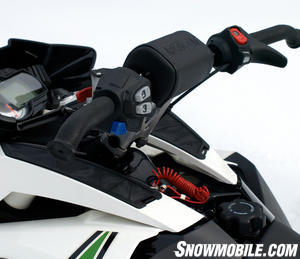
Other differences that result in the production nature of the RR are the handlebar controls, the sled has a key, and the gauge pack is a production piece. A difference not necessarily related to production is the secondary clutch. The race sled comes with TEAM driven clutch, one racers find easy to source parts for and easy to tune. The RR comes with Arctic Driven Clutch, one more suited to a production application since dealers are likely more familiar with it.
One last thing to note is when Arctic Cat says this is a Race Replica they mean it. It’s not a collection of decals and dress-up parts. It rides stiff, as it’s intended for an advanced rider who is looking to cover the harshest terrain. The suspension could be tuned for a more compliant ride but that would defeat the intended purpose. If you think you’re ready to ride a race-tuned sled, your chariot awaits.
Test Ride Impressions
When we had the RR in West Yellowstone this past March, we came away impressed that despite the racer qualities afforded this race replica, it actually handled trails more smoothly than we thought it would. Certainly the RR is no LXR with nicely stroked shocks calibrated for smoothing out the vagaries of groomed trails, but neither is it overly harsh. Call it stiff but controlled. The overall response to the 2013 Arctic Cat RR was very positive from our test riding crew.
Arctic Cat engineering has done an exemplary job of taking a full cross country-based race sled and civilizing it. The 160-hp 800cc two-stroke version will most likely be the preferred choice as it seems a bit lighter than the full turbo four-stroker, but at 177-hp and 121 ft-lbs of torque the turbo definitely has superior punch versus anything else on the trail.
If it’s straight ahead blasting that you want, go full-on turbo and rest assured that it can handle the groomed trail nasties you may hit at top speed – if you dare to hold the throttle in long enough! It will be a bit heavier through the front end and you will feel it after a full day of hard charging.
If you like the big g-force whoops like you’d find in a cross-country event, the 800 is your ticket to ride. The suspension will handle the punishment. And that 105 ft-lbs of torque is both strong at top end and very smooth for the occasional times you might get stuck behind a dawdling trail riding group.
Styling wise, Arctic Cat gives you a choice of two-sided white and green graphic styled, or you can opt for a sled with a single styling cue in all green or white.
Being on the RR, we found the turn into corners to be sharp and racer-quick, which you expect, right? Bump handling was serious, as you’d expect, but totally compliant. Since this is also a Sno Pro version, the sled gets full adjustability in its shocks, which again reflect its racer heritage. If you like to fine-tune your ride, the RR will suit you perfectly.
All the pieces for a serious amount of hauling butt down the trail and in the ditch line are here. If rough, tough and hard to bluff is your mantra, this Cat meets your needs, with just enough civility thrown in. – Jerry Bassett.
| 2013 Arctic Cat Sno Pro RR Specs | |
| Engine | Arctic/Suzuki 1056cc, turbocharged four-stroke, liquid-cooled or 794cc two-stroke twin; electronic fuel injection |
| Horsepower | 177 (1100 Four-stroke turbo); 160 (800cc two-stroke) |
| Drive | Arctic 6 post rpm-sensing drive with 10.75-in Arctic roller cam driven |
| Front Suspension | Arctic Race Suspension (ARS) twin A-arm suspension; Fox Evol X shocks with stabilizer bar; 10-inches of travel |
| Rear Suspension | ProCross Race Slide-Action parallel rail slide with 7-position coupling; Fox Zero X piggyback shocks; up to 13.5-inches of travel at rear wheel |
| Length | 118.0 in |
| Width | 44.0 in |
| Ski Stance | Adjustable from 42-43 in |
| Track | 15 x 128 x 1.25 Ripsaw |
| Brake | Radial master cylinder hydraulic with race disc on driveshaft |
| Weight | NA |
| Fuel Capacity | 10.6 US Gal |
| MSRP | $13,599 (800)/$15,399 (Turbo 1100) |
Related Reading
2012 Arctic Cat ProCross F800 LXR Review
2012 Arctic Cat F1100 Turbo Sno Pro Limited Review – Video
2012 Arctic Cat F1100 Sno Pro Review




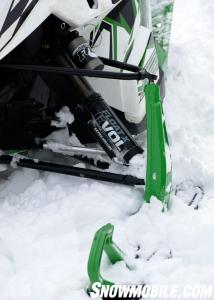
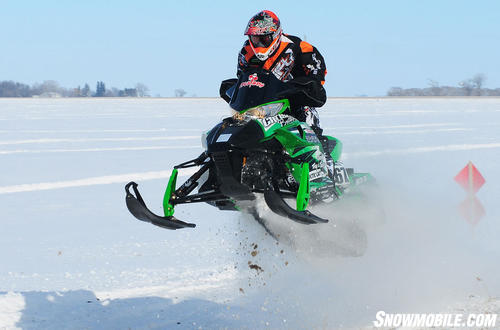
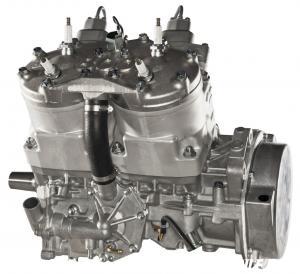

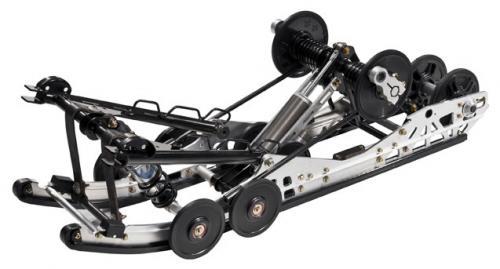





 Your Privacy Choices
Your Privacy Choices